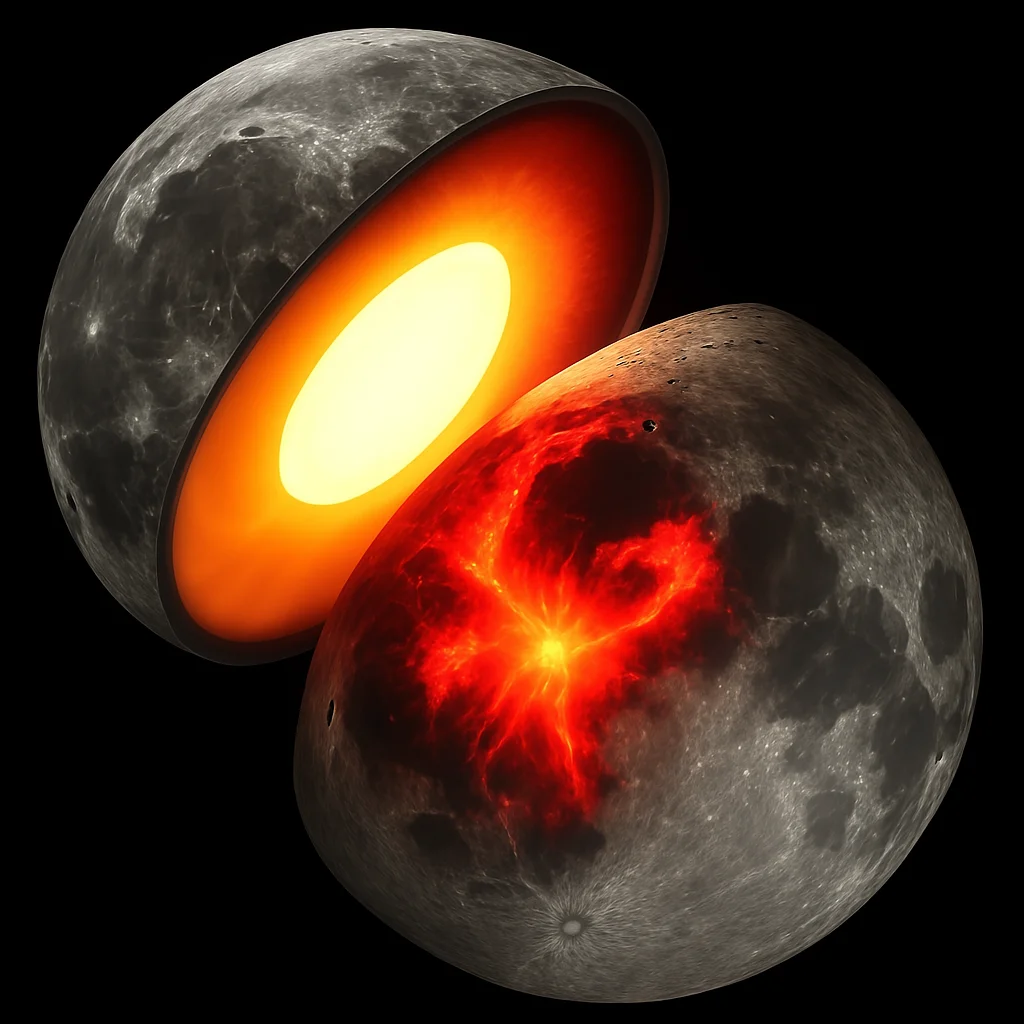
Lunar Oddity: NASA Reveals Uneven Heating Within the Moon, Unveiling Secrets of its Two Faces
For decades, scientists have observed stark differences between the near and far sides of the Moon. Now, NASA's latest research, utilizing data from the GRAIL mission, has unveiled a fascinating explanation: the Moon's interior is significantly warmer on the side facing Earth. This discovery sheds light on the Moon's volcanic history and offers crucial insights for future lunar missions.
An international team of researchers, led by Ryan Park at NASA's Jet Propulsion Laboratory, analyzed gravitational data collected by the Gravity Recovery and Interior Laboratory (GRAIL) mission. The mission, consisting of twin spacecraft, mapped variations in the Moon's gravitational field with unprecedented resolution.

The analysis revealed a key finding: the lunar mantle beneath the near side is about 2-3% more deformable than that of the far side. Modeling suggests that the near side mantle is approximately 180-360 degrees Fahrenheit warmer than its counterpart. This thermal asymmetry is likely sustained by the radioactive decay of elements like thorium and titanium on the Earth-facing side – remnants of intense volcanic activity billions of years ago.
"Our study shows that the Moon's interior is not uniform: the side facing Earth (the nearside) is warmer and more geologically active deep down than the far side," explained Dr. Ryan Park to IFLScience. "This difference is linked to the Moon's volcanic history and explains why the two sides look so different."
The difference in temperature has significant implications for the Moon's surface geology. The near side is characterized by dark, smooth plains called mare, formed by ancient lava flows. The far side, in contrast, is more rugged and heavily cratered. The hotter, more deformable mantle on the near side likely facilitated the extensive volcanism that shaped its surface.

The study, published in the journal Nature, demonstrates the power of “tidal tomography,” a technique that could be applied to other celestial bodies like Mars, Enceladus, and Ganymede.
Furthermore, the detailed gravitational map produced by this research will be instrumental in developing lunar Positioning, Navigation, and Timing (PNT) systems, crucial for future lunar exploration missions. As Dr. Park notes, "This enhanced gravity map is a critical foundation for developing lunar Positioning, Navigation, and Timing (PNT) systems, which are essential for the success of future lunar exploration missions." This enhanced understanding of the Moon’s gravity will aid in spacecraft navigation and surface operations.
This discovery raises fascinating questions about the Moon's formation and evolution. Was the thermal asymmetry present from the beginning, or did it develop over time due to radioactive element distribution or other factors? Future missions, including those focusing on seismic measurements from the far side of the Moon, will help refine our understanding of the lunar interior.
What are your thoughts on this newfound lunar asymmetry? Share your insights and predictions in the comments below!